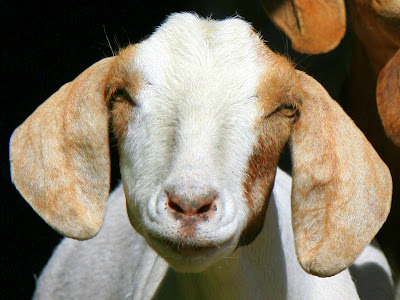I develop my blog based solely on aesthetic considerations, so I'm adding some text to balance out the pictures I've posted lately. I'll talk about my research. If you get bored by the details, just skip to the bottom where I explain why I think my research is important.
So, quite basically, when light enters your eye it makes a few stops in the middle of your brain and then continues to the back of your brain where it reaches the visual cortex. From there it can go one of two general directions: (1) if it goes up the back of your brain towards the top, it is processed and converted into information that informs your actions, or (2) if it goes under your brain toward the front, it is processed and converted into information that informs your perception and identification of objects and scenes. We call pathway #1 the dorsal stream and pathway #2 the ventral stream.
These two don't always work together in perfect harmony. For example, studies have been done where a subject is asked to reach and touch a dot that appears on a screen. However, as soon as the subject begins to reach, the dot moves slightly at the same time that the person executes a tiny eye movement (called a saccade). The dorsal stream (the action stream) catches the change, and the person's arm quickly changes course mid-flight, then hits the dot head-on. But the ventral stream (the perception stream) doesn't quite catch it, evidenced by the fact that the subject doesn't consciously realize that the dot has moved or even that his/her arm moved with it.
Right now I'm studying these two visual processing streams with an experiment that looks at how predictability and/or practice affect our strategies for reaching out and grasping objects of different sizes. My experiment is based on an experiment where, in one set of trials, subjects reached out and picked up an object. Sensors attached to their fingers showed that their hand opened to a certain width and began closing at a certain distance from the object. In another set of trials, the subjects wore goggles that blinded them as soon as they began to reach for the object. The sensors showed that their hands were opening wider and staying open longer.
Here is where it gets cool. If you randomize the trials so that the subject doesn't know if the goggles will close or not when the reaching movement begins, the subjects will adopt a single, middle-of-the-road strategy (i.e. hand opens wider than visually guided reach, but narrower than blind reach) for every trial. Interesting, but not terribly surprising. You'd expect that if you told the subject, "Okay, now I'm going to alternate the conditions. First you'll be able to see, then you'll be blinded; back and forth," that the subject would be able to go back to the original tailored strategies they adopted in the first two sets of trials. Surprisingly, even though they can predict what is going to happen next, they still adopt the middle-of-the-road strategy for every trial.
My first set of experiments will simply examine whether the same "homogenization effect" occurs with the predictability of the size (instead of the predictability of visual feedback) of the object that the subject is picking up.
Why is this important?
Well, aside from the fact that they are intrinsically interesting to me, these experiments further our understanding not only of healthy vision, but also of certain kinds of blindness. One interesting and lesser-known form of blindness is called "blindsight." It earned this name because those who suffer from it have a lesion in a part of their brain that cuts off the ventral stream (the perception stream) from visual input while leaving the dorsal stream (the action stream) partially intact. In other words, the action part of their brain can see, but they don't consciously see anything at all. Imagine being blind and yet being able to reach out and grasp things pretty much as well as someone who has perfect vision. This is the seemingly paradoxical world of someone who has blindsight. In order to help those who suffer from this and other related pathologies, we must increase our understanding of what each part of the brain is contributing to our visual interaction with the world.
30 September 2007
27 September 2007
26 September 2007
Goat Simmons
16 September 2007
 I've never given voice to my feelings about goats. Today a friend's blog had a post with a picture of a goat, and I was surprised by the disgust that surged within my heart.
I've never given voice to my feelings about goats. Today a friend's blog had a post with a picture of a goat, and I was surprised by the disgust that surged within my heart.Goats and camels disturb me. Their eyes are too far apart. It's like they can see you from any angle. Especially goats. Of course, camels are like large, deformed desert goats, but they don't pay as much attention to you as goats do. Goats like to sit there and stare at you until you get uncomfortable. Camels are like, "Yeah, whatever."
I know that I'm technically wrong here, but my gut feeling is that any animal that has chosen, over the course of evolution, to attack things by bashing its skull into them is merely dangling on that precarious string of survival through utility to humans.
15 September 2007
Subscribe to:
Posts (Atom)








